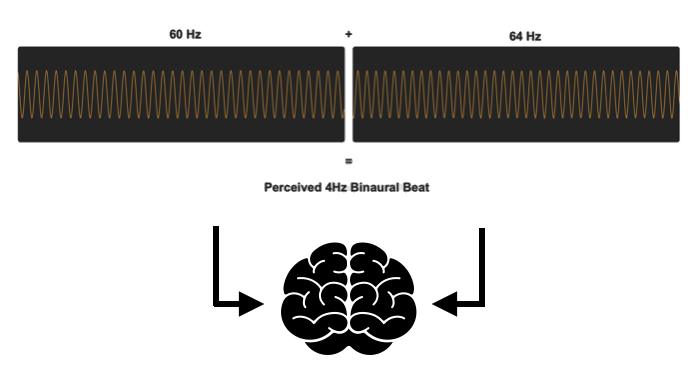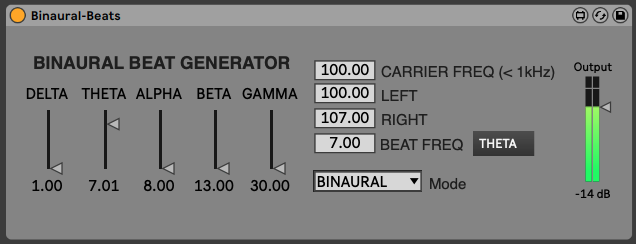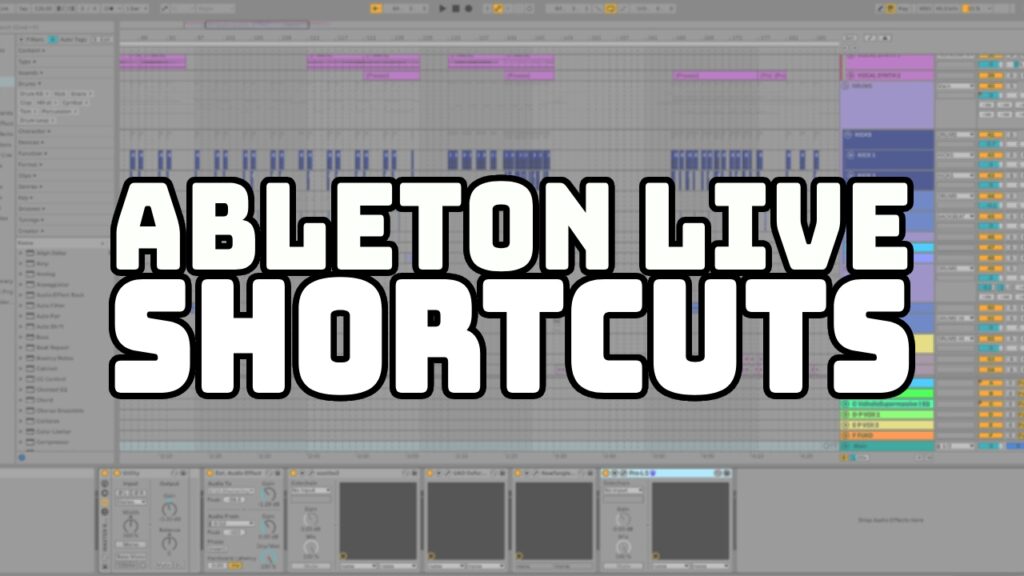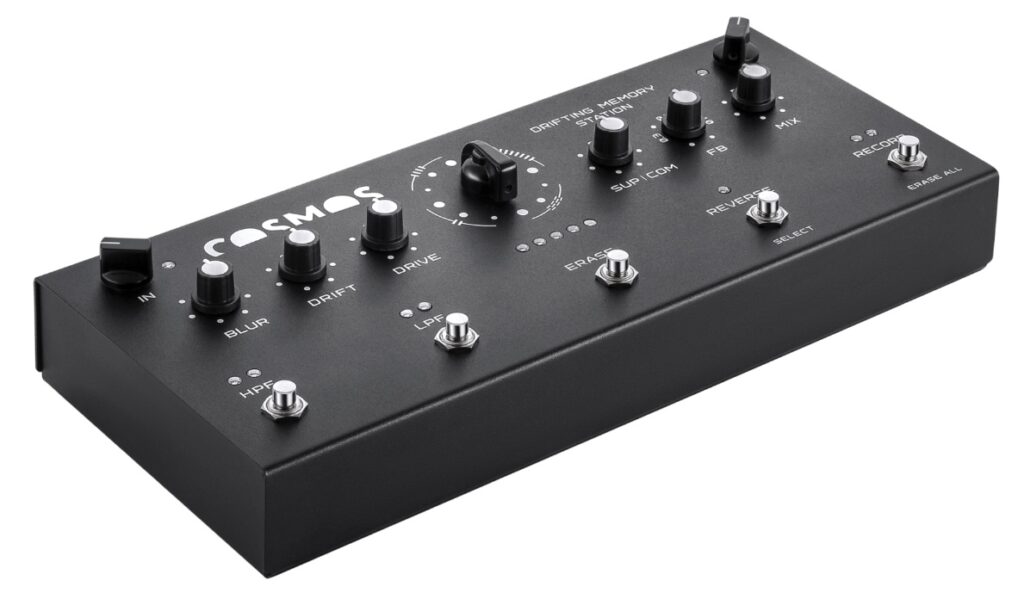Binaural beats have been found to have various health benefits and have been used for meditation and music therapy for some time. In this article, I’ll define exactly what binaural beats are, the possible benefits, and a free Max for Live device that generates binaural beats.
USE WITH CAUTION
I present the examples below and associated software with the caveat that I am not a trained physician, simply a curious practitioner in the field of sound. Caution is advised when using binaural beats and anyone with epilepsy or prone to seizures is advised to avoid them. Some people have reported feelings of depression, anxiety, anger, and confusion after experiencing binaural beats (Binaural). Consult your doctor before using binaural beats to treat any health condition.
WHAT ARE BINAURAL BEATS?
First, let’s talk about sum tones and difference tones since this idea underlies the premise of binaural beats. If we play two tones through speakers or headphones, two additional tones will be produced–the sum and difference of the original two tones. The bigger the difference the more likely it is that the sum or difference tones will be out of the audible spectrum (20Hz to 20kHz).
At smaller differences, we will hear a beating at a frequency equal to the difference between the tones. This will appear as a sort of tremolo effect as the amplitude periodically dips to zero. These sorts of beats are called monaural beats. They are created before the sound reaches the hearing mechanism.
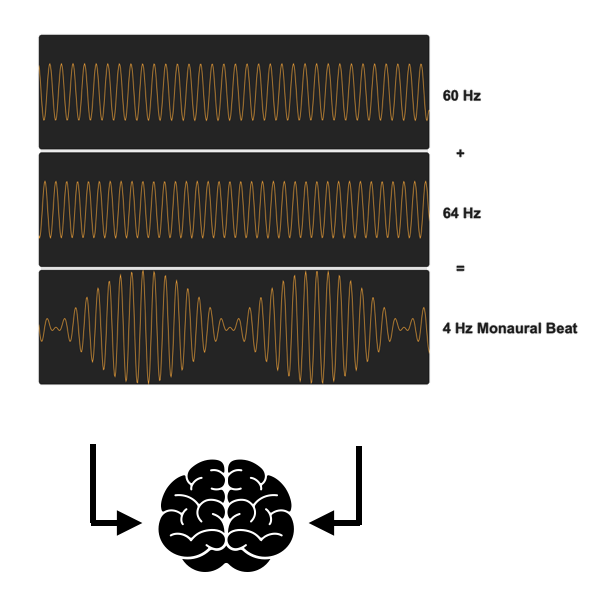
Here is a 60 Hz tone played in dual mono.
Audio PlayerNow let’s add a 64 Hz tone to create a monaural beat
Note the tremolo or beating effect you hear at a frequency of 4Hz
Here is a 100 Hz tone played in dual mono.
Audio PlayerNow let’s add a 102 Hz tone to create another monaural beat.
Audio PlayerNote the tremolo or beating effect you hear at a frequency of 2Hz
The beats you hear, whether through monitors or headphones are created by constructive and destructive interference. The phase relationship between the two tones creates a periodic beating as the amplitude dips to zero at a rate equal to the difference between the two frequencies.
In the above examples, the beats are created via actual wave interference as the physical waves interact in the room if you are using monitors, or as the signals interact electronically in dual mono if you’re using headphones. In both cases, there is a commingling of sound sources before the combined sound reaches your ear.
Now if you isolate the two frequencies so that each ear only receives one of the sine waves, there is no commingling of sounds before reaching your ears. This can be done by sending each channel only one isolated sine wave and listening through headphones.
This is where the magic of binaural beating happens. Even though no external interference is happening, we can still perceive the beating as our brain somehow provides the missing effect. It could be argued that there is some cross-bleed that occurs from one ear to the other perhaps through vibrations that travel from one side of the skull to the other. This explanation might make some sense at lower frequencies where waves are more intense. However, the phenomenon persists even at higher frequencies up to 1kHz in some cases. Evidence suggests that binaural beats are an auditory illusion. A result that occurs when the frequency range of the binaural beat coincides with “…the main human EEG (electroencephalogram) frequency bands. The brainwave entrainment hypothesis, which assumes that external stimulation at a certain frequency leads to the brain’s electrocortical activity oscillating at the same frequency, provides the basis for research on the effects of binaural beat stimulation on cognitive and affective states.” (Ingendoh)
The effect of a binaural beat is far more subtle than a monaural beat.
Here is a 3Hz monaural beat created by combining a 75Hz tone and a 78Hz tone.
Audio PlayerHere are the same two tones isolated in the left and right channels to create a binaural beat.
Audio PlayerHow is it that a 3Hz beat can still clearly be perceived even without the tones interacting physically or electronically? It is certainly more subtle but there nonetheless. Read on for more examples.
The brain is somehow filling in the missing physicality of the beating. I believe this is similar to the concept of the missing fundamental, a concept to be covered in a future article.
BENEFITS AND NEGATIVE SIDE EFFECTS
Beyond the perceived sonic effects are the potential emotional and mental effects caused by listening to binaural beats. The benefits of listening to binaural beats are inconclusive and sometimes contradictory. Areas studied have included memory, creativity, anxiety, mood, attention, and vigilance.
“While findings for most putative applications up to now are either solitary or contradictory, several studies consistently report a diminishing impact of binaural-beat stimulation on anxiety levels.” (Chaieb)
Meditation is generally accepted as a beneficial activity that calms the mind by “tuning down the number of random thoughts that pass through it. Regular meditation practice has been shown to reduce stress and anxiety, slow down the rate of brain aging and memory loss, promote mental health, and lengthen attention span.” (Cafasso)
“Binaural beats between 1 and 30 Hz are alleged to create the same brain wave pattern that one would experience during meditation. When you listen to a sound with a certain frequency, your brain waves will synchronize with that frequency.” (Cafasso)
BINAURAL BEAT FREQUENCY RANGES
Certain binaural beat frequency ranges have been found to assist in achieving specific desired states. Although as mentioned earlier more consistent research is needed.
Delta: 1 – 4 Hz
- Deep sleep
- Healing and pain relief
- Meditation
- Anti-aging
- Access to the unconscious mind
Theta: 4-8 Hz
- Meditation
- Deep relaxation
- Creativity
Alpha: 8-14 Hz
- Relax and focus
- Reduce Stress
- Maintain positive thinking
- Increase your learning capabilities
- Easily engage in activities and the environment because you are in a state of flow
Beta: 14-30 Hz
- Keeping your attention focused
- Analytical thinking and solving problems
- Stimulating energy and action
- High-level cognition
Gamma: 30-100 Hz
- Increased cognitive enhancement
- Attention to detail, helping in memory recall
- A different way of thinking, which is a sign of creativity
(Cafasso)
HOW TO USE BINAURAL BEATS
As mentioned earlier, use caution and consult a physician before attempting to treat a physical or mental condition on your own. Avoid the practice altogether if you are prone to seizures. If you meditate already, you might try adding binaural beats to your practice. It is probably wise to experiment with short durations perhaps 10 to 15 minutes and always listen at safe levels (65-75dBSPL or so). Little has been written about the base carrier frequencies used other than they should be below 1kHz. So experimenting with different frequencies seems appropriate.
EXPERIMENTS
To give binaural beats a try myself, I chose an arbitrary base frequency of 200 Hz and a binaural beat frequency of 6 Hz, which lies in the center of the Theta range that purportedly aids in meditation, deep relaxation, and creativity. I listened to the binaural beat below for 10 minutes with a timer set on my phone, eyes closed in a comfortable chair.
Excerpt (2o seconds)
Subscribe to Waveinformer and Download the full 10-minute file (24.1 MB) + a free Binaural Beat Generator (Max for Live Device)
During the process of listening I became acutely aware of all the external sounds that were happening in my environment. I listened through open-back headphones which was perhaps a mistake. What I thought was a quiet space was anything but. Birds, door creaks, and house settling sounds became thunderous. I became aware of how difficult it was to focus on the beat without allowing myself to succumb to the sonic distractions around me. But there were moments of meditative peacefulness that although transitory, were quite powerful. It was certainly relaxing and in terms of creativity, I think I may have conceived of a new idea for a piece–more to come on that.
But now I was really curious and wanted to give it another try. So I changed the carrier frequency to 100Hz and used a lower Theta frequency of 4Hz. This time I went for 15 minutes with closed-back headphones.
Excerpt (20 seconds)
Audio PlayerSubscribe to Waveinformer and Download the full 15-minute file (36.2 MB) + a free Binaural Beat Generator (Max for Live Device)
This was a much different experience. The 15 minutes passed incredibly fast. I found myself naturally wanting to breathe deeply and quiet my mind. But where the closed-back phones and lower frequency effectively eliminated all external sonic distractions, I found myself struggling to prevent random thoughts from dominating my mindset. As time progressed I was able to suppress these internal distractions to a large degree and was really starting to experience a peacefulness when the 15-minute timer rang.
My conclusions from these admittedly rudimentary experiments are that there are definite benefits to be had from listening to binaural beats, but of course, your mileage may vary, and as mentioned caution should be used. Consult a professional if you are at all unsure.
I can see how regular practice could yield positive results as many practitioners of meditation will attest. At the very least, the practice can shield us at least temporarily from the constant bombardment of imagery and aural stimuli that assault us just about every minute of the day.
CONCLUSIONS
Although the true cause and effect of binaural beats remain a mystery, there can be no doubt they are a perceivable experience as the examples above demonstrate. The evidence as to the benefits is inconclusive and more research is warranted. But there seems to be a preponderance of research that suggests there are mental health benefits.
While applications for implementing pure binaural beats in music or sound design may be limited, all of us can benefit from methods that improve our mental health and well-being. For music and sound professionals, it makes perfect sense to utilize techniques that use our medium of choice as creators.
MAX FOR LIVE DEVICE
If you want to try creating binaural beats yourself, download the free Max for Live Device called Binaural-Beats. Available to Subscribers (FREE) and Pro or Academic Members of Waveinformer.
Installation Instructions:
- Subscribe for FREE to get access to the download link below.
- Download the Binaural-Beats Generator
- Drop the Binaural-Beats.amxd file onto an audio track in Ableton Live
- Select a Carrier Frequency (Left/Right frequencies will be automatically calculated)
- Select a Binaural Beat Range
- Choose a Mode (Binaural or Monaural) to activate
EXTRAS
Test your knowledge with the Binaural Beats IQ test
See what’s new on our Member Resources page.
Not a Pro Member yet? Check the Member Benefits page for details. There are FREE, paid, and educational options.
REFERENCES
“Binaural Beats: What Are They and What Are the Benefits?” WebMD, WebMD,
www.webmd.com/balance/what-are-binaural-beats. Accessed 3 Feb. 2024.
Cafasso, Jacquelyn. “Binaural Beats: Sleep, Therapy, and Meditation.” Healthline, Healthline Media, 28 Mar. 2023, www.healthline.com/health/binaural-beats#instructions.
Chaieb, L., Wilpert, E. C., Reber, T. P., & Fell, J. (2015). Auditory Beat Stimulation and its Effects on Cognition and Mood States. Frontiers in Psychiatry, 6. https://doi.org/10.3389/fpsyt.2015.00070
Ingendoh, R. M., Posny, E. S., & Heine, A. (2023). Binaural beats to entrain the brain? A systematic review of the effects of binaural beat stimulation on brain oscillatory activity, and the implications for psychological research and intervention. PLOS ONE, 18(5). https://doi.org/10.1371/journal.pone.0286023\


